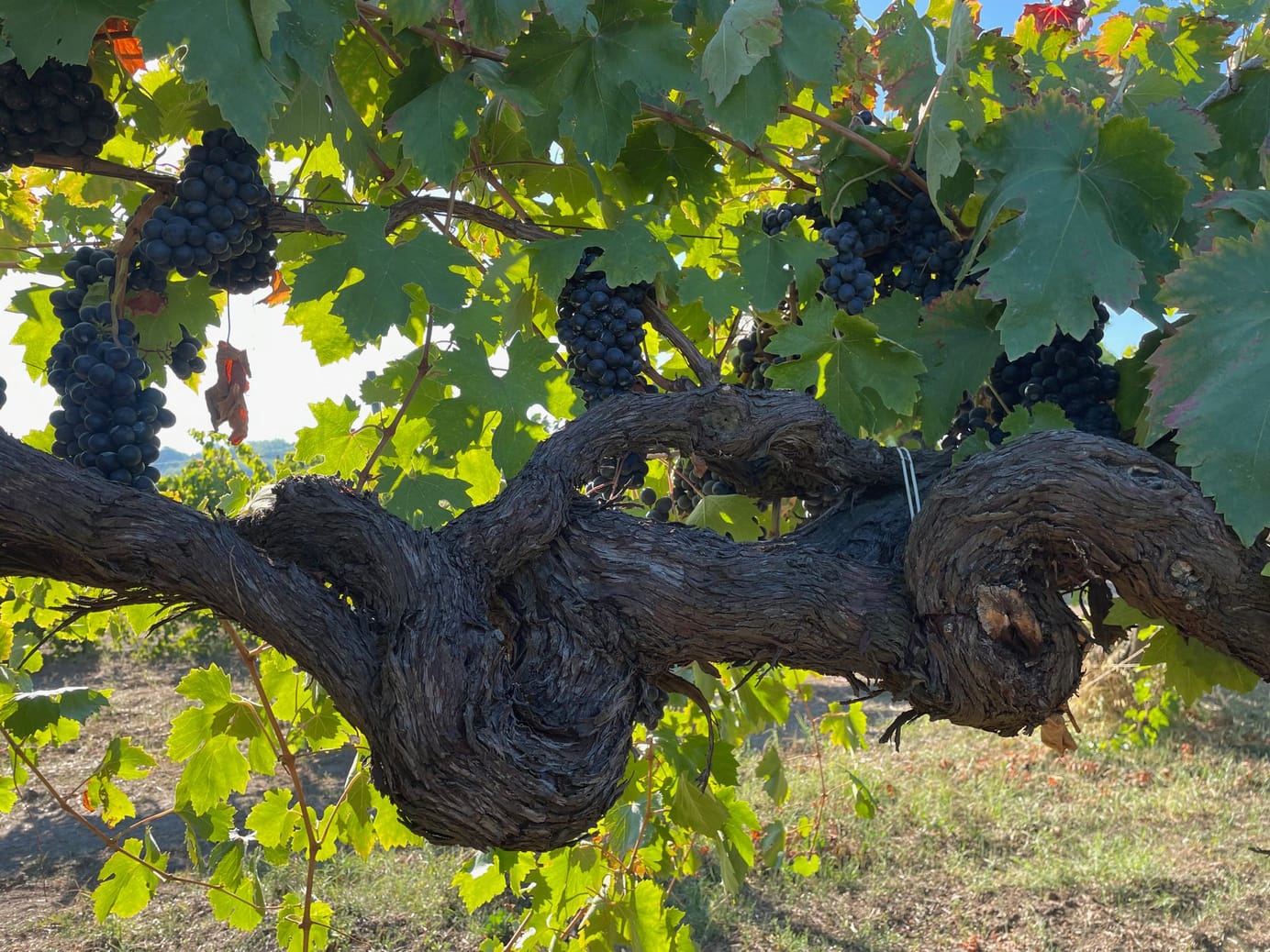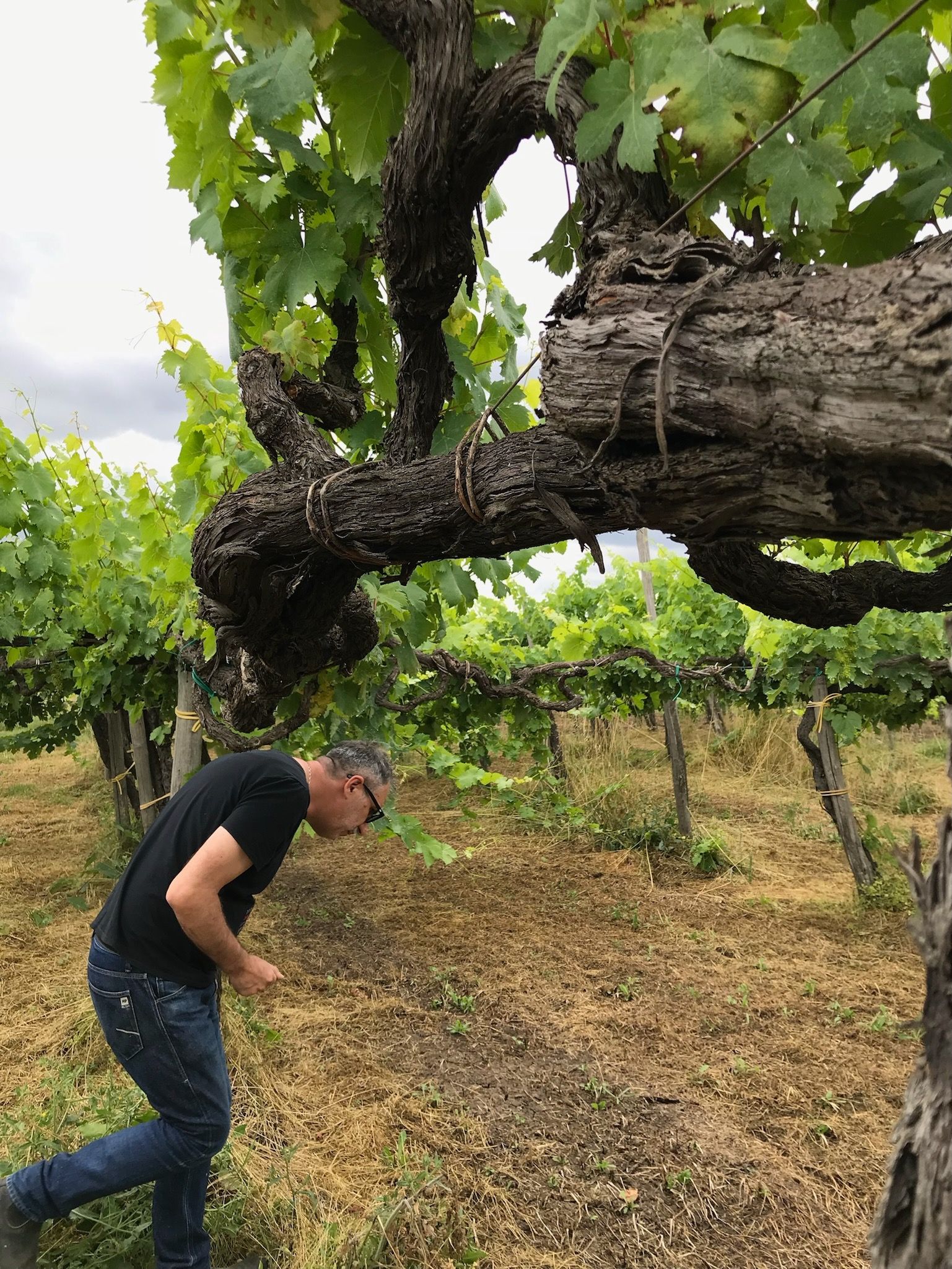
Meet the winemaker: Cantina Giardino
5 min read
Cantina Giardino is a winery run by Daniela De Gruttola and Antonio Di Gruttola in Irpinia, an appellation in the Campania region of southern Italy. They make wine from local grapes grown in historic vineyards, with low intervention in the cellar.
We spoke to Cantina Giardino team member Sara Fant, after including one of their wines in our selection for RAW WINE Club. This was our conversation.
What's your role at Cantina Giardino?
I have spent the last three harvests working here. Since last year, I have also taken care of the communication with importers, tastings, the organisation of events ad our participation in wine fairs. Of course, I still help with the harvest and make wine in the cellar at crucial moments, such as bottling.
What can you tell me about Daniela and Antonio's background?
Antonio studied food technology at university, and then specialised in viticulture and oenology. He went to Piedmont to do it and had the opportunity to there drink a lot of good wine and learn from his professors. Both Antionio and Daniela come from Irpinia, and at the end of the 1990s they were making wine for fun with a group of six friends inside one of their garages - Professor Giardino's garage - to drink for themselves. At one point, they realised that their family and friends really enjoyed what they were making, so they decided to start a business and begin this adventure. Now, it's just Daniela and Antonio making the wine, but the others are still part of the society. They named the project Cantina Giardino because is all started in Giardino's garage. At the time, Antonio was a professor of chemistry and making wine for others, but at conventional wineries. The wine they were making for themselves was natural, using spontaneous fermentation and without anything added.
The winery is located in Irpinia, a region in the middle of Italy - right in the middle of the 'boot'. The area was hit by earthquakes many years ago and a lot of villages were destroyed. A lot of people left their homes there to live in cities, as there was no reconstruction. It's an area with a long winemaking tradition, and a lot of vines - especially old vines - were abandoned. A big part of why Daniela and Antonio started the project was to preserve the patrimony of the land and its culture. Initially they worked as a negoce - buying grapes but learning how to work the vines, and tasting wines made from them which were completely natural. The more they tasted, the more they were convinced to make natural wine. They enjoyed it so much.
They started with red wine, because here the main grape is Aglianico. But after three years, they also started to make skin macerated white wine, inspired by the Friuli area bordered with Slovenia, which has a long tradition of skin macerated whites. Cantina Giardino is really connected to the idea that wine needs time to express itself. Yes, you need wine that you can drink immediately, but it should also be able to last for many years. For example, there's one Aglianico we make that is only released to market after 10 years.

Are Daniela and Antonio from a winemaking families?
Antonio was the first generation of his family to make wine for public consumption, but in this territory viticulture is really present - so families typically grow their own vines to make wine to enjoy at home.
What do you farm at Cantina Giardino and how many hectares of vines do you have?
For white grapes, we have Fiano, Falanghina, Greco and Coda di Volpe, which is a clone of Trebbiano). We also have red Coda di Volpe and Aglianico. We have 7 hectares of owned vines, then 18 more that we either rent or buy from. For those vines, we have really long contracts - 15 to 20 years long - and the vineyards are worked by old people who are happy to see their grapes being used in this way. We also work most of the vineyards we rent, so it's a collaborative relationship. But in terms of quantity, it also depends on the vintage and how many grapes each plant grows. This year, for example, we had problems with mildew and 2 hectares might produce the grapes of half a hectare.
What has influenced Cantina Giardino's style of farming and producing, and why do you take a low intervention approach?
There's a local traditional vine growing system called 'Raggera Avellinese', named as such because we are in the province of Avellino. You grow the vines like a pergola and it's a system that's impossible to work with machines, so you need to put a lot of effort into cultivating them. The reason for growing them this way was originally to allow for more ground space for cultivating other things. Because the vines are tall, farmers could grow on the ground and middle level beneath them. They also provide shadow for other crops. So it's a method of integrated agriculture and, the viticulture here was - and mainly still is - a family thing. But it's very difficult to find people that have experience of working in this way - we're not sure if we will be able to continue.
And in terms of the low intervention approach, Daniela and Antonio believe that natural wine is real wine, and they love to drink old wines, made without the use of chemistry. For instance, if you drink a Barolo from the 1940s, it will have had almost nothing added to it. To them, natural wine tastes real and gives them a taste and feeling they love, and because it all started in a garage, not making wines to sell, they didn't need to apply products to increase production or prevent problems, because they were making it for fun. From the very beginning, they had no doubt that this was the path for them.
They initially started using a small quantity of sulfites. But, to export to Japan and a number of countries in Asia, deep analysis is required. In February 2006, they analysed a selection of wines from 2003 and 2004, and realised the sulfur they had added was already gone. You use sulfur to protect the wine and it should still be there in 2-5 years in order to keep protecting it. They realised the small quantity they were using was pointless, so from that point on haven't used any sulfites in their wines. They had also tried a lot of wines without sulfur and loved them, so it just made sense. And they still keep incredibly well - the other day, we had a bottle from 2009 and it was crazy, really deep and evolved.
What's the average age of the vines you work with?
We have some from 2015, as we did some replanting of single plants at that time, but most of them are 50, 70 or 90 years old. We also have some pre-phylloxera vines. A lot of them we took over from old people, who chose not to use pesticides or herbicides as they're too expensive, so they're really clean plants.
Visit Cantina Giardino's RAW WINE profile to learn more about the winery and discover which RAW WINE fairs they're pouring at soon.


